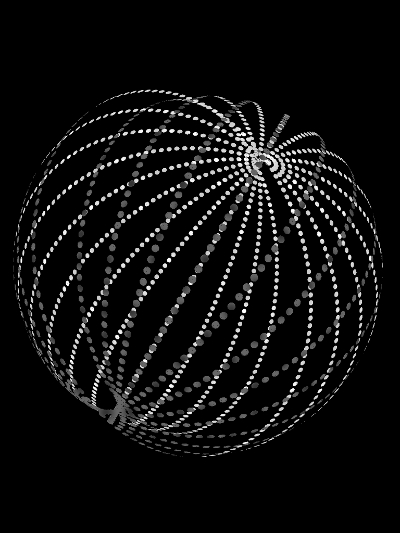A Dyson sphere is a theoretical megastructure with a photovoltaic surface that encloses an entire star and collects all of its energy output. Sometimes referred to as a Dyson shell, the hollow structure could surround an entire planetary system, such as our Solar System, gathering the energy required to power a civilization. Some have theorized that the people inside the sphere could live on the interior surface itself.
However, a host of difficulties makes a rigid Dyson sphere a near impossibility:
A rigid shell would require an enormous amount of material. Mining the planets, moons, and other celestial bodies in a planetary system may not produce enough material for a structure of this scale.
It would be extremely difficult to keep the sphere intact, and the components used would need to be far stronger than currently possible with any known material.
It would be difficult to keep the free-floating structure from drifting and colliding with the star.
The sphere could be damaged or pushed out of place by an impact from a comet or meteor.
Most of the interior surface would not be habitable, due to a lack of gravity.
A number of variations on the Dyson sphere are more feasible.
Dyson Swarm

A Dyson swarm is a dense array of individual solar collectors or mirrors surrounding a star. The units in the swarm, which is also known as a Dyson cloud, follow discrete orbits around the star. The number of units in the cloud could be increased over time. While this approach makes the technology much more practical and realistic than a rigid shell, organizing the orbits would still be challenging.
Dyson Ring
A Dyson ring consists of a single ring of solar collectors or mirrors that share the same orbit around a star. This is the simplest and most practical version of a Dyson structure.
Dyson Bubble
Similar to a Dyson swarm, a Dyson bubble is made up of individual units. Rather than orbiting around a star, however, the units anchor themselves in space with massive light sails. The sails use the pressure of light particles and light waves emitted by the star to counteract the star’s gravitational pull inwards.
Because the units in a Dyson bubble are stationary, they are easier to organize than the units in a swarm. However, while light sails have already been successfully tested as a method of space propulsion, materials scientists have not yet been able to produce the very low-mass material required to deploy them around a star.
Origin of the Concept
Such structures were first proposed in the 1937 science fiction novel Star Maker by Olaf Stapledon, and later popularized by Princeton University physicist Freeman Dyson in a 1960 paper published in the journal Science, entitled “Search for Artificial Stellar Sources of Infrared Radiation.” Dyson believed that advanced civilizations would eventually outstrip local energy resources and turn to collecting limitless stellar energy on a massive scale through these megastructures.
Dyson Spheres and the Search for Extraterrestrial Life
Building any variation on the Dyson sphere is currently far beyond the engineering capabilities of the human race. However, Dyson proposed that scientists could locate advanced alien civilizations by searching the skies for these structures.
For example, we could detect a rigid Dyson sphere by looking for the waste heat emitted by the exterior surface in the form of infrared radiation. The effects of a dense Dyson bubble would be similar to those of a Dyson sphere, and would also be detectable. Though partial Dyson spheres such as swarms and rings would also change how light is emitted from their stars, the effects would be smaller and more difficult to identify.
Scientists with SETI and other organizations have been poring through data since the international Infra-red Astronomy Satellite (IRAS) mission of the early 1980s found over 245,000 sources of long-wave infrared radiation, most of which have been identified as natural sources.
However, in October 2015, scientists from SETI, Yale, and Penn State University announced that the debris-like matter surrounding a star named KIC 8462852 may actually be a massive array of solar panels. While the matter is similar to that which naturally surrounds young stars, KIC 8462852 is an old star, and the presence of such matter is highly improbable.
Further investigation of KIC 8462852 would involve using a radio dish to listen for wavelengths associated with technological civilizations.
Photo Credit: Dyson Swarm, GFDL/CC, uploaded to Wikipedia by Vexedent